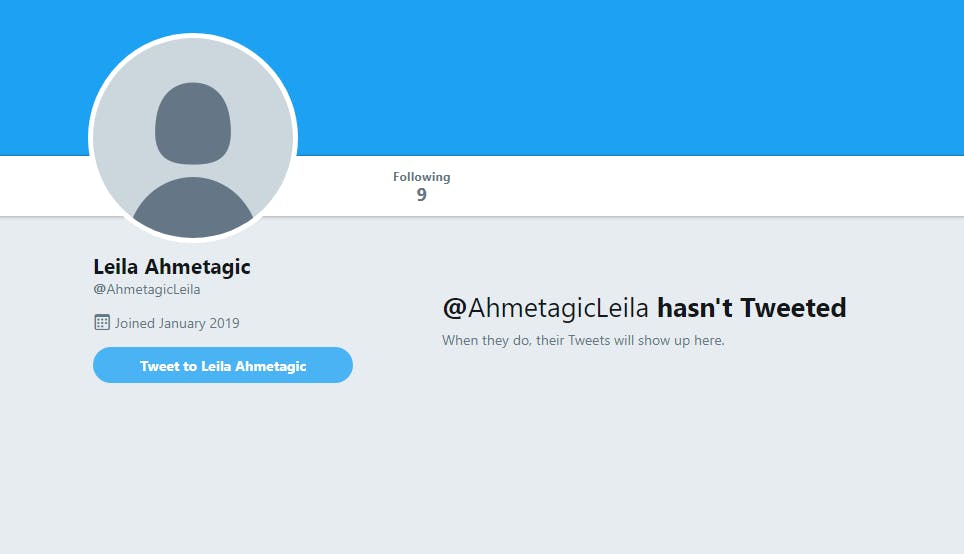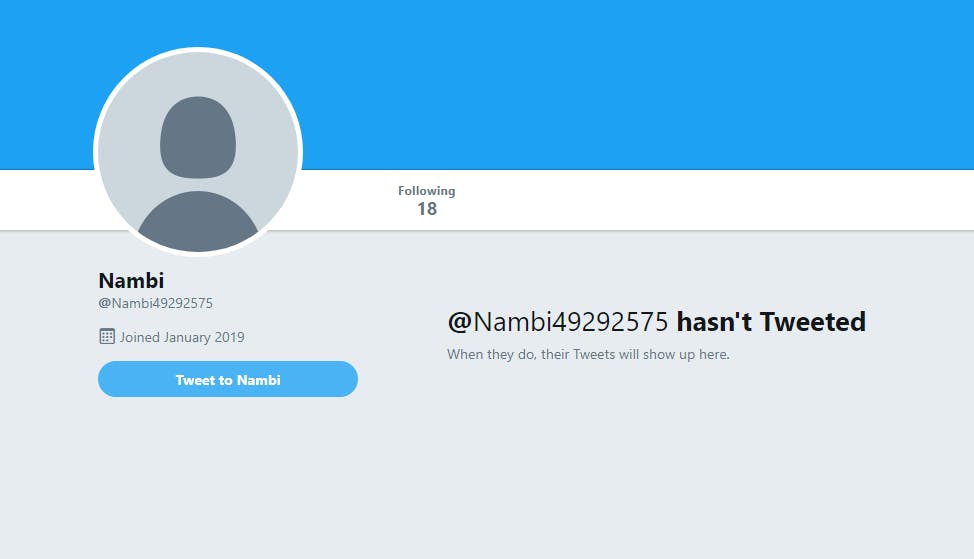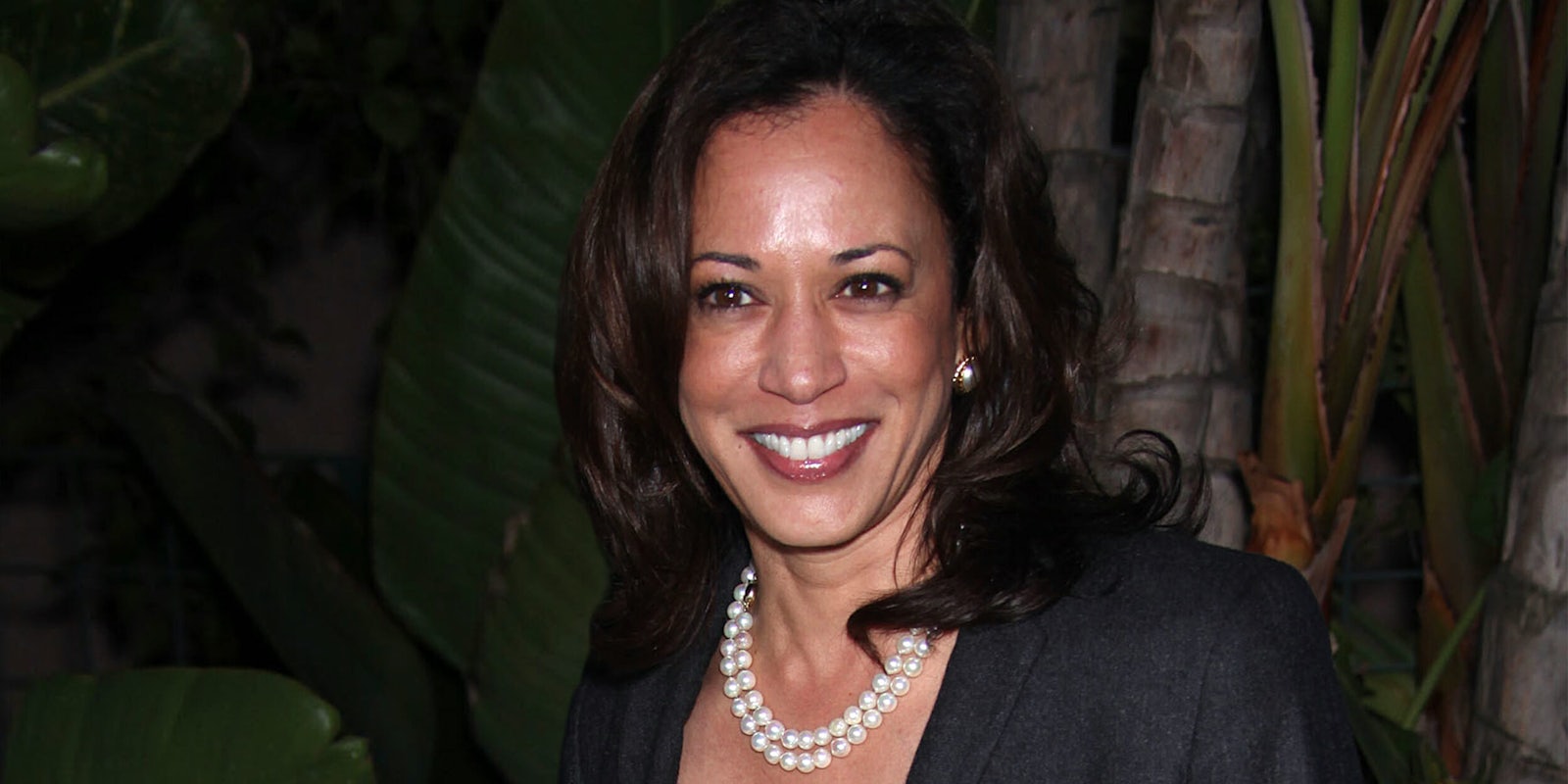When Sen. Kamala Harris (D-Calif.) launched her 2020 presidential campaign, her announcement was widely met with cheers on the left. Here was a candidate who many believe has a real groundswell of support.
But how much of that clout is real? As one data analytics company tells the Daily Dot, 30 percent of her Twitter followers are fake.
Allegations about her Twitter following began last week on the right—and it’s a complicated accusation.
One of Harris’ calls to action tweets from her personal Twitter account, @KamalaHarris, was flagged by some suspicious conservatives on Jan. 29 for its odd engagement ratios. Despite having over 2 million followers, the post had made less than 100 retweets.
https://twitter.com/tygrproductions/status/1090293254690488322
https://twitter.com/Benaskren/status/1090336258998575106
However, that tweet flagged by right-wing sleuths was an advertisement, not a tweet, which explains why the engagement differentiated from her normal tweets. It wasn’t something that stayed permanently on her timeline and was likely only seen by people it was promoted to. Many tweets from her personal account boast far better engagement.
But in 2019, false information moves fast. Conservative activist Jack Posobiec said 40 percent of her followers were “bots.”
https://twitter.com/JackPosobiec/status/1090357925623881728
It’s not the first time Harris has been subject to accusations at the speed of social media. A tweet by notorious huckster Jacob Wohl drove a conversation about Harris’ citizenship for days, despite being easily proved wrong.
But it doesn’t mean that conjecture about fake followers is inaccurate.
A report by social media analytics company SocialRank shared with the Daily Dot identified close to 675,400 suspect accounts following @KamalaHarris—that’s over 30 percent of the presidential hopeful’s total Twitter followers.
“There is something afoul here and there seems, on the surface, that there has been some artificial boost in fake/bot followers,” the company’s co-founder and CEO Alex Taub told the Daily Dot.
According to Taub, the percentage of fake followers is much higher than the flooding of bot-like accounts usually experienced by high-profile accounts—normally somewhere between 5 and 20 percent.
It’s also not an uncommon occurrence for high-profile politicians. President Donald Trump has a similar number. The company says it uses its own algorithm to determine an account’s authenticity and to spot fake bulk-purchased accounts, similar to those that the company had bought for prototypical test phases.
Twitter vehemently disagrees with this methodology for assessing fake accounts, however.
“The methodology used by this site is deeply flawed and their incorrect information should not be taken seriously,” a Twitter spokesperson said, noting the abstract nature of the term “fake” followers, and the reliance on follower counts and recency of tweeting as barometers for authenticity. The site noted those types of behaviors—having few followers or not tweeting—don’t make a user fake.
However, Taub said in the past year, there’s been a noticeable jump in the kind of followers it considers suspect.
“We had a refresh of her account from August 2017 when she had 720,000 followers. At that point, our system has 16.9 percent fake followers,” Taub explained. “Then I refreshed the account today and she now has 2.2 million followers and 30.7 percent fake followers.”
When SocialRank used this same methodology to track growth in President Donald Trump’s own account following last year, it told the Daily Dot that nearly 35 percent of the president’s following exhibited characteristics that would flag them as fake computer-managed bot accounts. That led to scores of stories about Trump’s large artificial following. However, numbers from different independent audit organizations vary.
TwitterAudit, unaffiliated with Twitter itself, puts Trump’s fake followers at 12 percent, Eight months ago, when Harris had 1.8 million followers, TwitterAudit put it at 40 percent fake, a number frequently cited by Harris’ detractors online this week. Twitter takes particular issue with TwitterAudits methods. Twitter spokesperson Nick Pacilio has previously called TwitterAudit “very flawed” in their assessment of followers. Pacilio was a former spokesperson for Kamala Harris.
Being unverified, inactive, and following less than 25 others are all characteristics SocialRank uses to indicate fake accounts, which can be deployed by third-party companies to inflate follower counts in exchange for cash. While these qualifiers might not definitively identify a fake account alone, for example, an “egg” account with no profile picture, the most suspect accounts exhibit several of these characteristics.
A quick scroll through Harris’ followers and you’ll quickly come across many suspect accounts which also fit this description, all either following few people and with few tweets and almost always without a profile picture. The Daily Dot was able to easily identify several of these kinds of accounts.


Many of these accounts were created in January 2019—the month Harris announced her bid. Others, which might be years old, may have only tweeted once or twice. Before publishing, some of the accounts that the Daily Dot brought to Twitter’s attention were restricted by Twitter. (Twitter told the Daily Dot that it routinely culls suspicious accounts.)
Statistics available on SocialBlade plotting Harris’ gradual follower growth over the past two years reveal that major follower spikes happened while she was making the news. For example, she gained 50,780 followers in June 2017 the day after Republicans contentiously interrupted her repeatedly during a Senate Intelligence Committee hearing on Russia. Another major follower boost happened this year, after Harris launched her presidential campaign.
If these suspect accounts are being deliberately added to Harris’ follower count, then it’s being done incrementally and subtly. If anything is indicative that this is by any means strategic in nature, according to Taub, it’s is the sheer percentage of dubious bot-like accounts.
Twitter rules strictly forbid users from buying or selling fake accounts or engagements in order to swell their follower count or boost tweets, but it’s still extremely easy to do with an entire market of social media bot vendors to choose from.
“There is no way to know if it was done by her, her team or someone else,” Taub said. “Unfortunately you can’t control if someone buys fake followers on your account. It is an easy way to make someone look bad, by buying them fake followers and exposing that publicly.”
Indeed, opposition activists have been known to hire astroturfing groups of bots in a bid to smear or undermine a high-profile individual.
Twitter did not, on previous occasions, challenge the legitimacy of SocialRank’s analytics when contacted for comment by the Daily Dot over Trump’s fake follower issues.
“We do not comment on individual accounts or aspects of individual accounts,” Pacilio said in response to a follow-up question addressing this. “We’re committed to people seeing high-quality information on our service and working to stop any inauthentic activity as part of our ongoing work to build a healthier service.”
The Daily Dot also reached out to two of Harris’ representatives, who did not respond in time for publishing.


